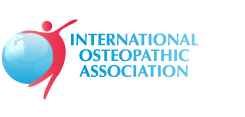• It is never appropriate to have a sexual relationship with a patient who is receiving active treatment. The professional relationship must be terminated.
• There is a history of complaints against members who have had sexual relationships with their patients/former patients. Complaints have been made by patients, significant others (including spouses of both members and patients) and former significant others. Therefore, there is a minimum recommended waiting period of one year following the termination of the professional relationship, before beginning any sexual relationship.
• Refer the patient to another manual osteopath and document these actions on the patient’s chart (it is recommended the referral be in writing and a copy of such correspondence be given to the patient and a second copy placed in the file).
• With the patient’s consent, transfer patient records to the new attending manual osteopath.
• In some cases, it may never be appropriate for a member to have a sexual relationship with a former patient. For example, if there is a continued power imbalance between the member and the patient, or the patient is vulnerable.
• Remarks of a sexual nature are a common form of sexual abuse of patients. Always speak in words that patients can understand. Pay attention to the way you convey information and to the words you select when speaking to patients by employing the correct vocabulary for body parts and procedures & being particularly sensitive to words that could cause misunderstandings; and
• Many patients may have language or conceptual difficulties. Realize that the use of charts and diagrams enhances the communication process. Because how manual osteopaths say something is as important as the choice of vocabulary, they need to use tact and consideration when explaining procedures to patients to avoid causing anxiety, and not talk about themselves or their problems to patients, this being considered unprofessional;
• Manual osteopaths shall provide patients with an opportunity to ask questions & provide patients with answers within the scope of manual osteopathy practice;
• Body language, the non-verbal component of language, will convey as much or more to patients as words. Patients may distrust the message if body language contradicts what is being said. Always remember the importance of maintaining appropriate eye contact, adopting an appropriate facial expression to convey concern and proficiency, being careful in your use of physical gestures; and respecting your patient’s personal sense of space.
Careful use of body language can greatly enhance communication, leading to better understanding and trust between therapist and patient. Since the main goal of communication is mutual understanding, listening is just as important as speaking.
You must learn to communicate with your entire being, to listen and carefully observe patients.
By learning to listen effectively, you can learn to modify your speech to match the needs of the patient. The benefits of listening and observing include enriched communication and patients who are dignified partners in their own care.
Abuse Prevention Guideline

